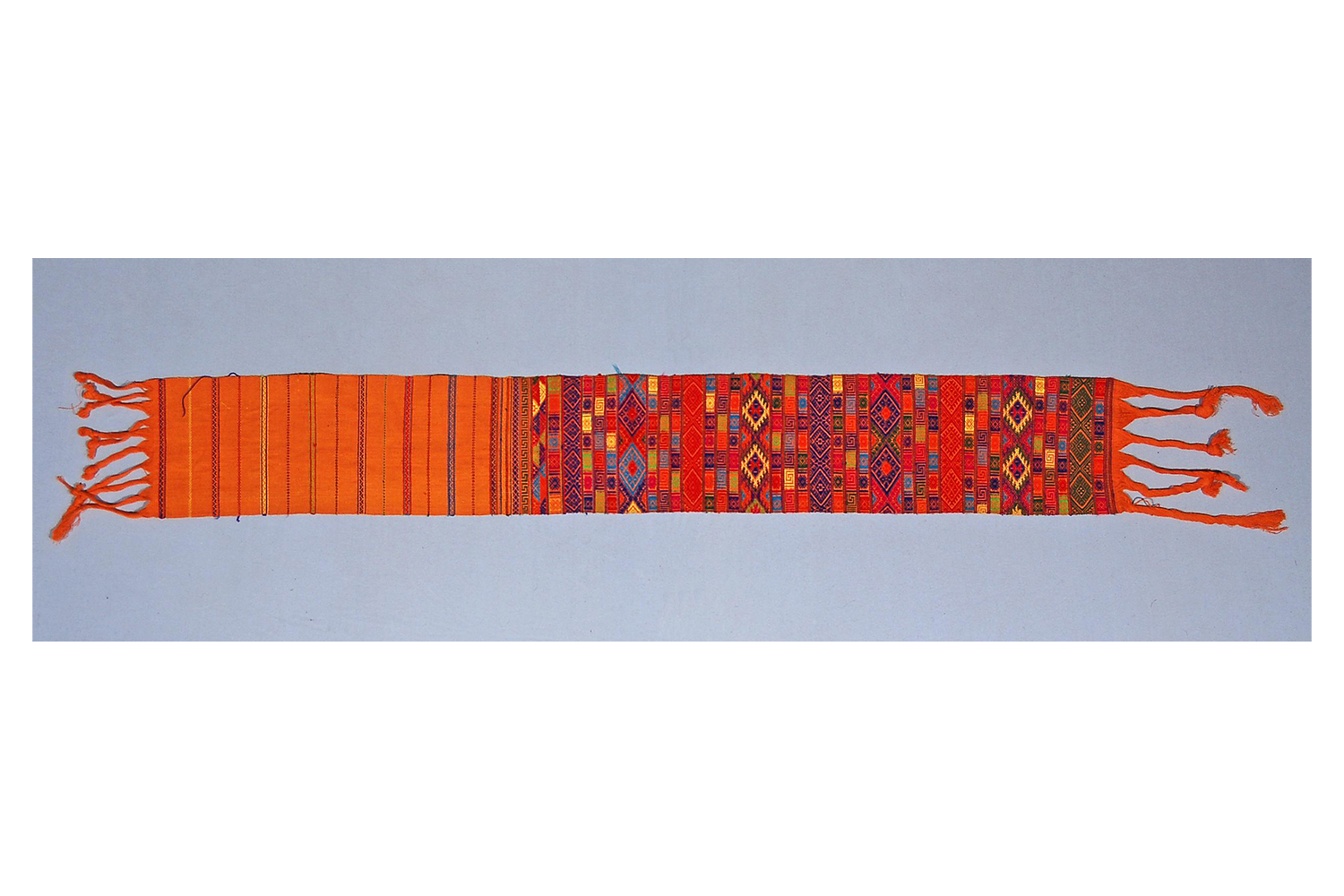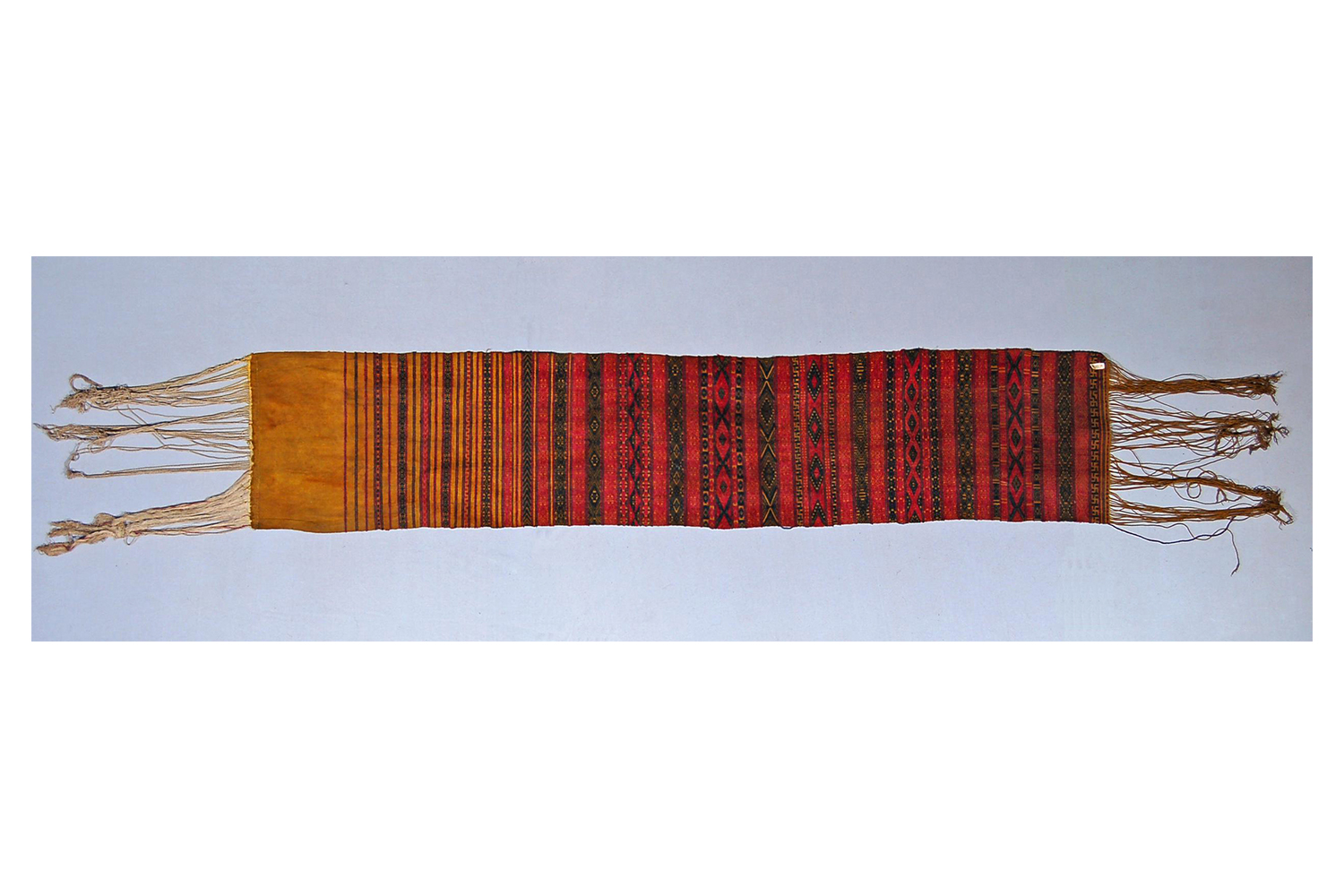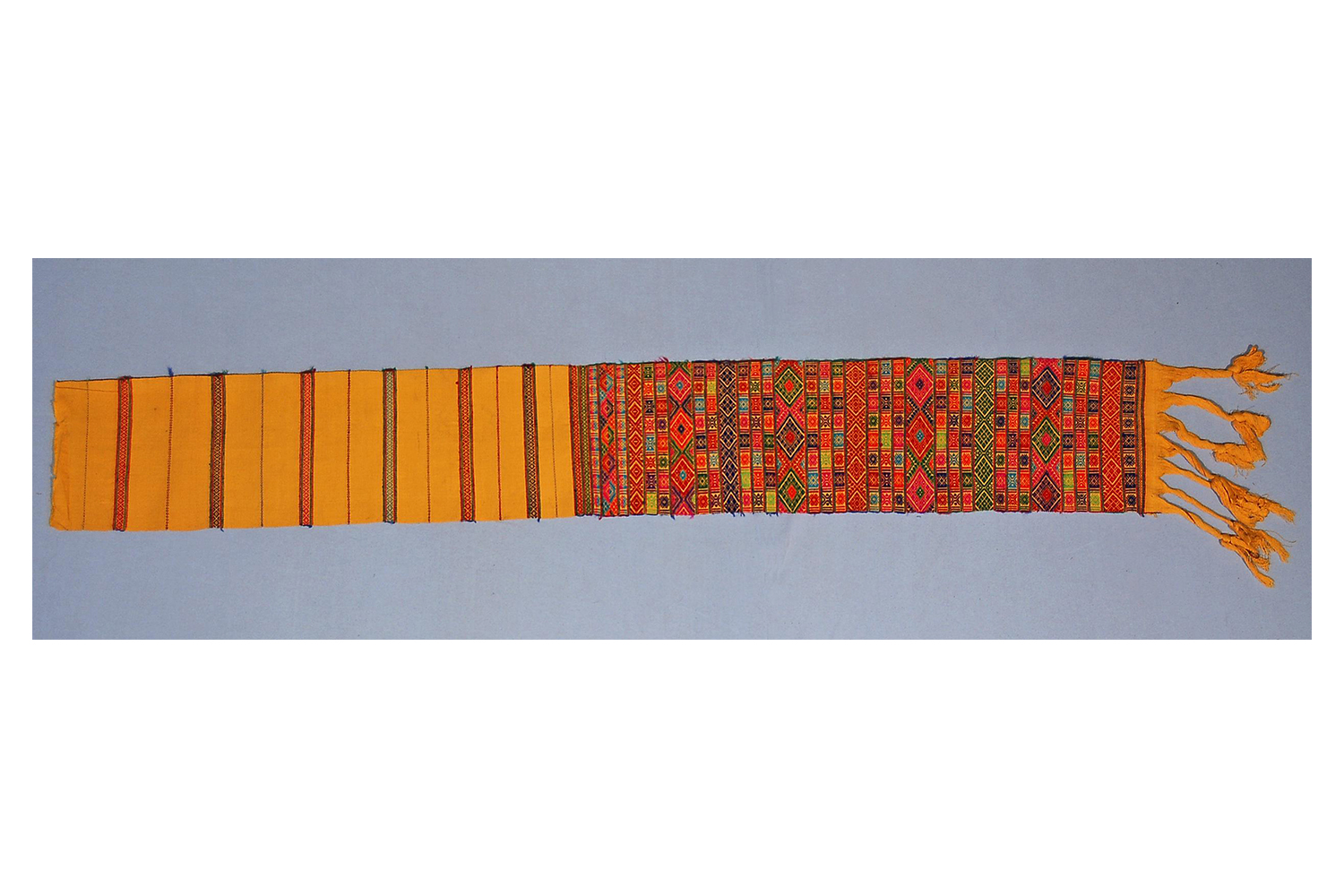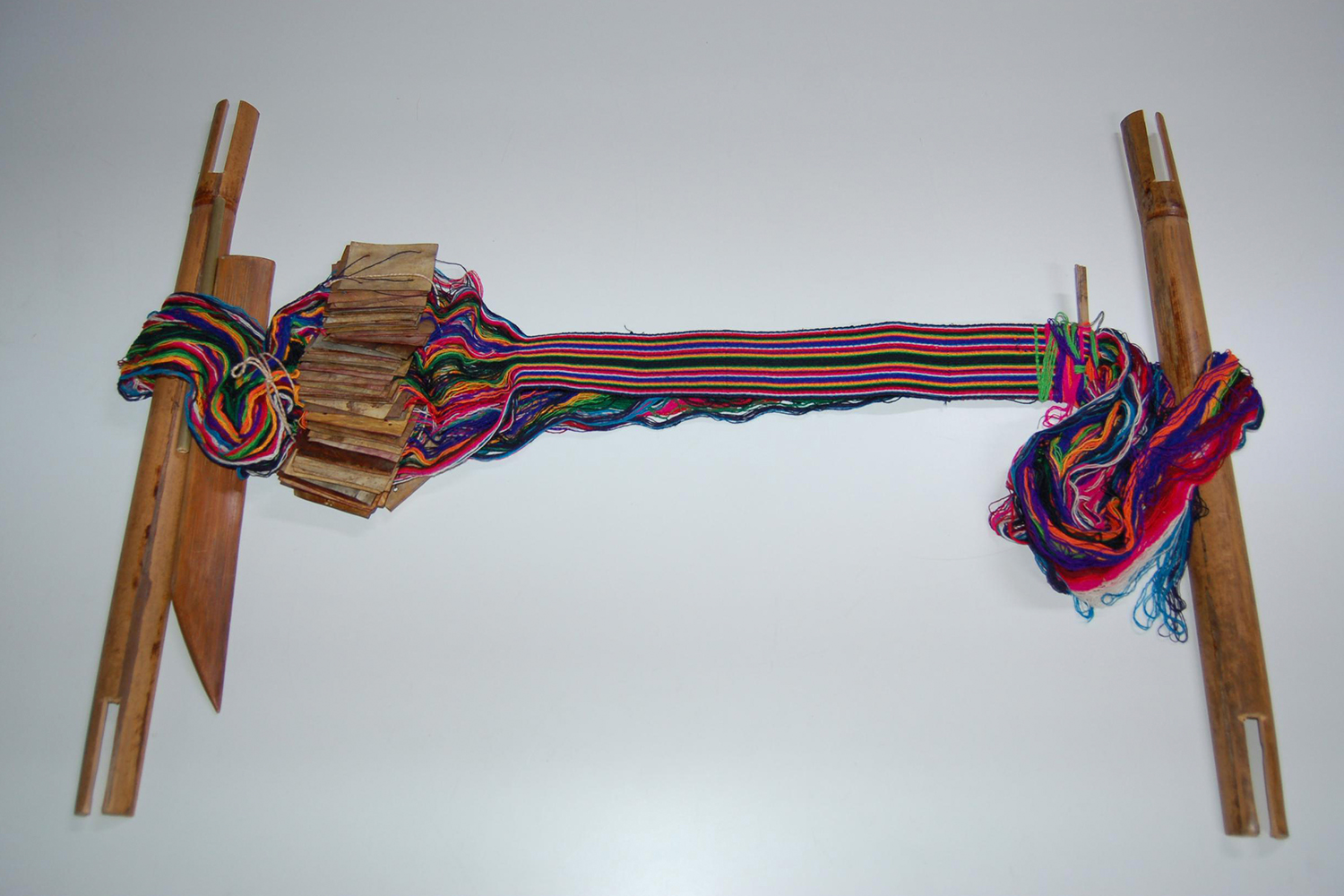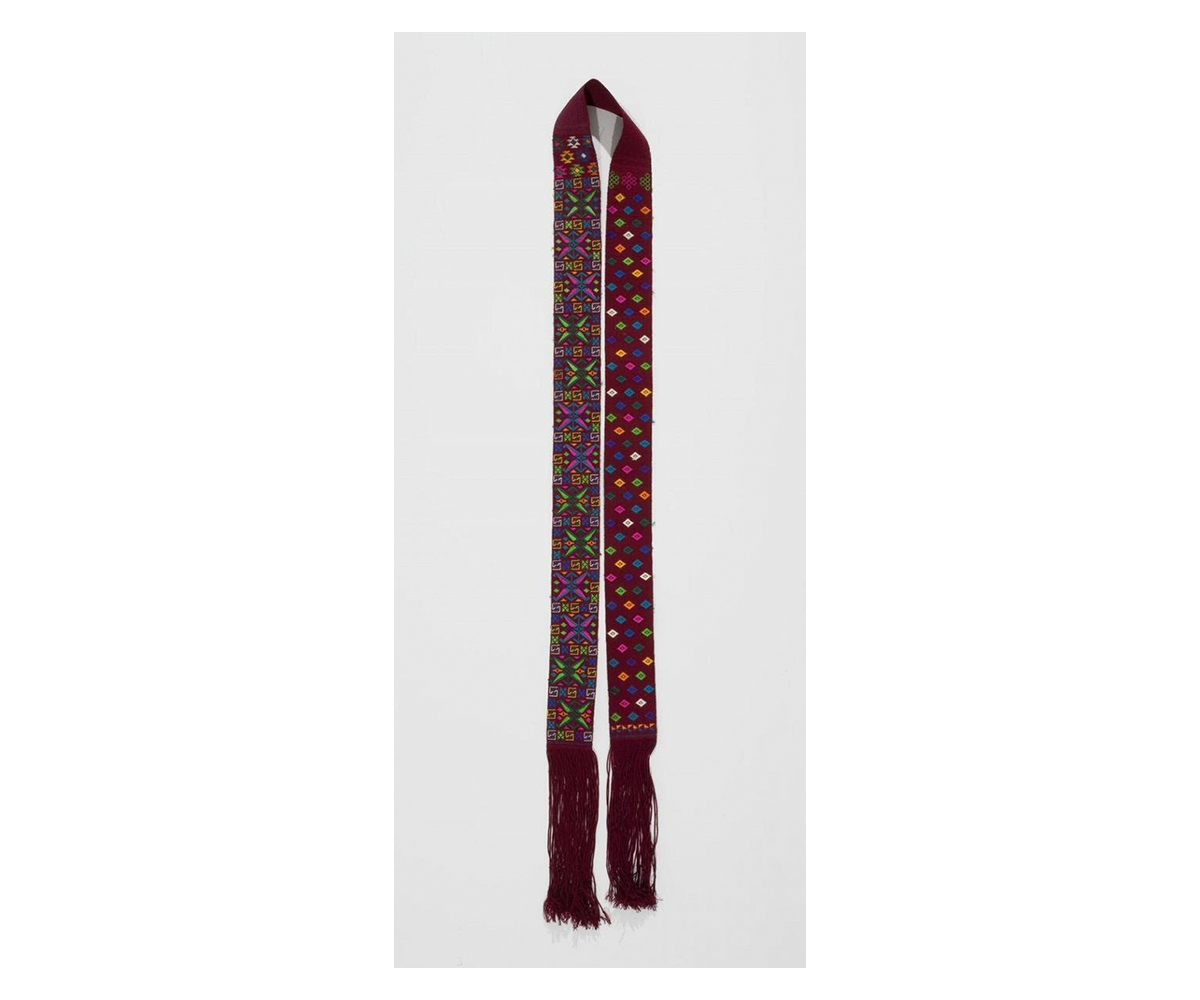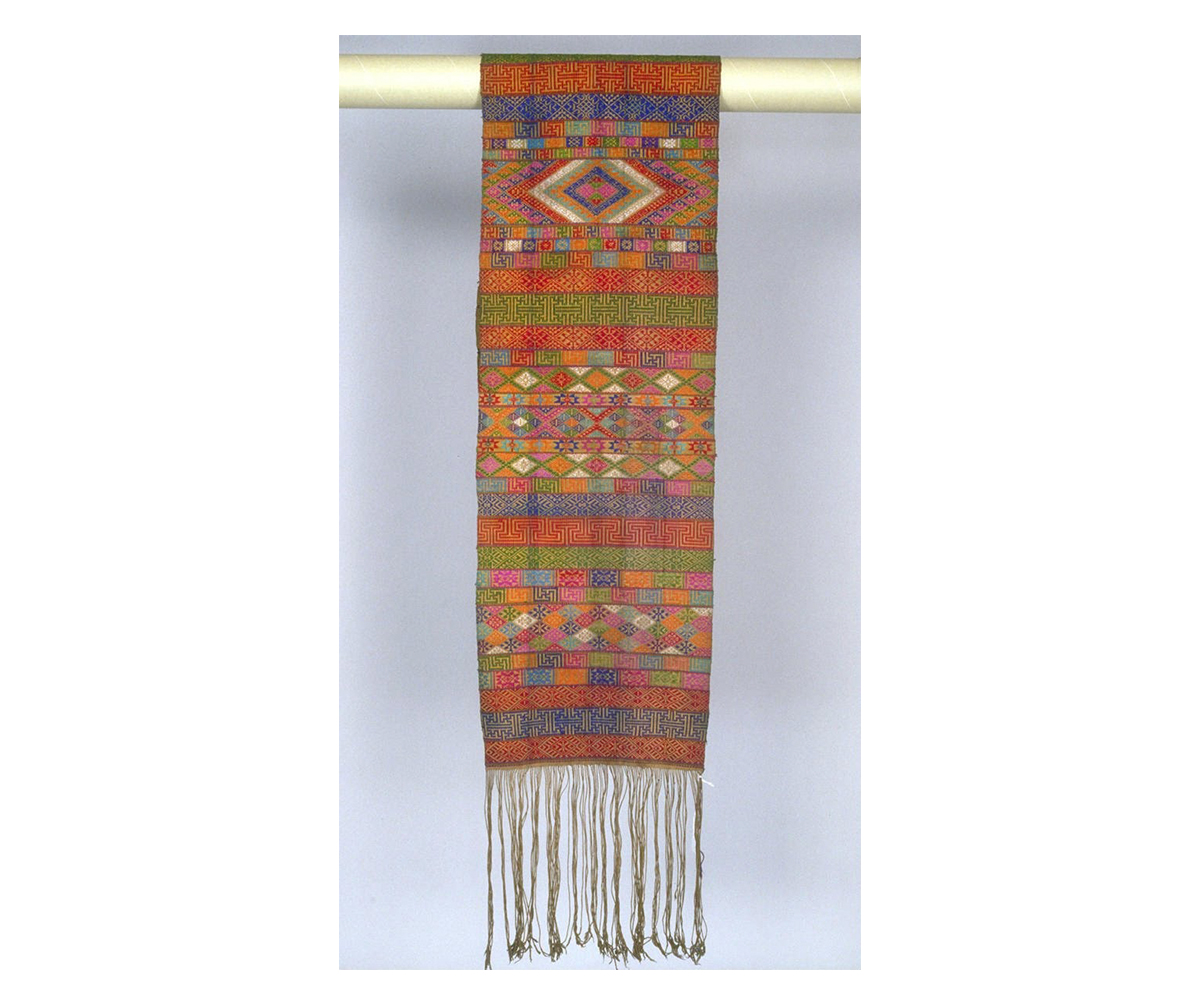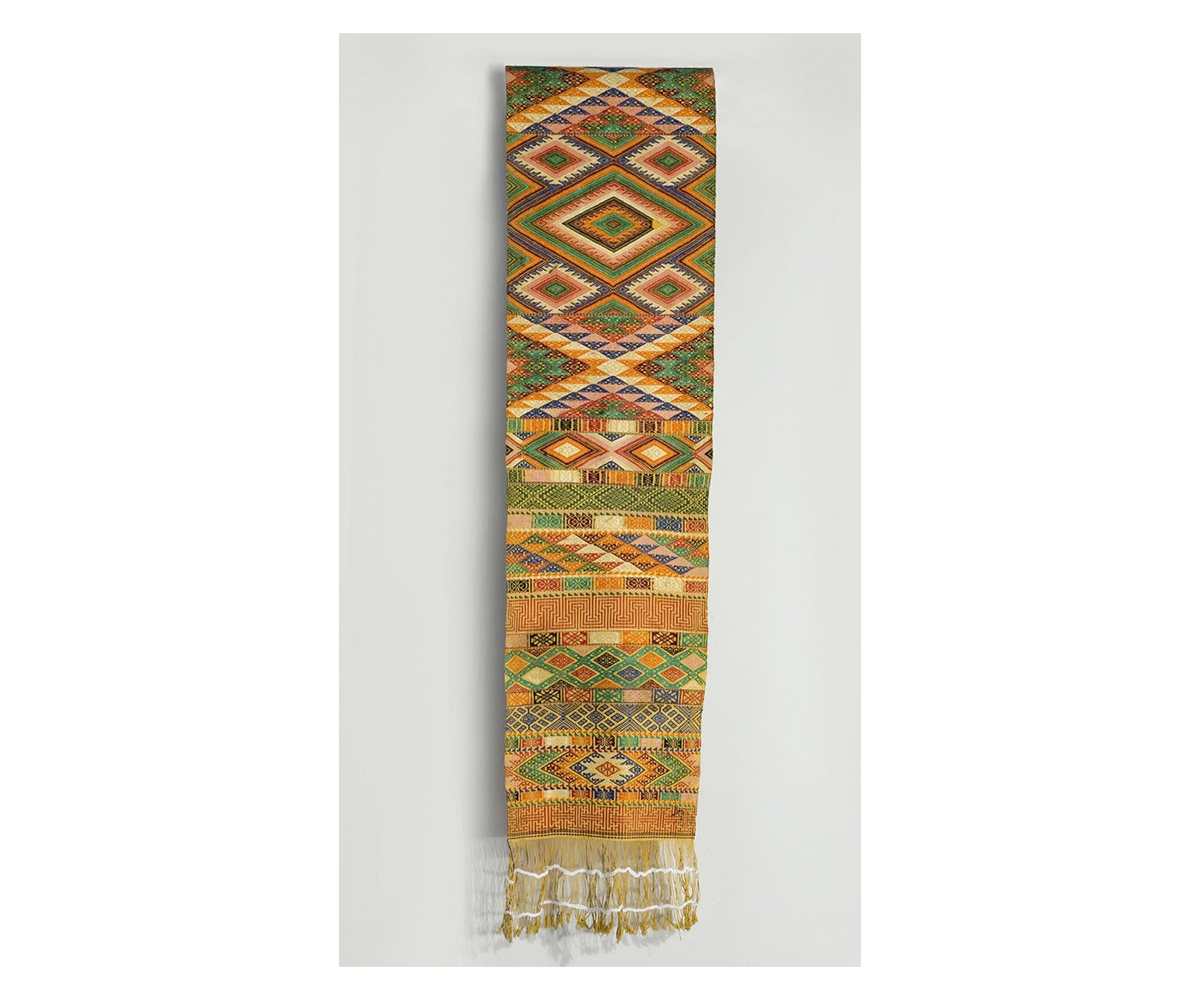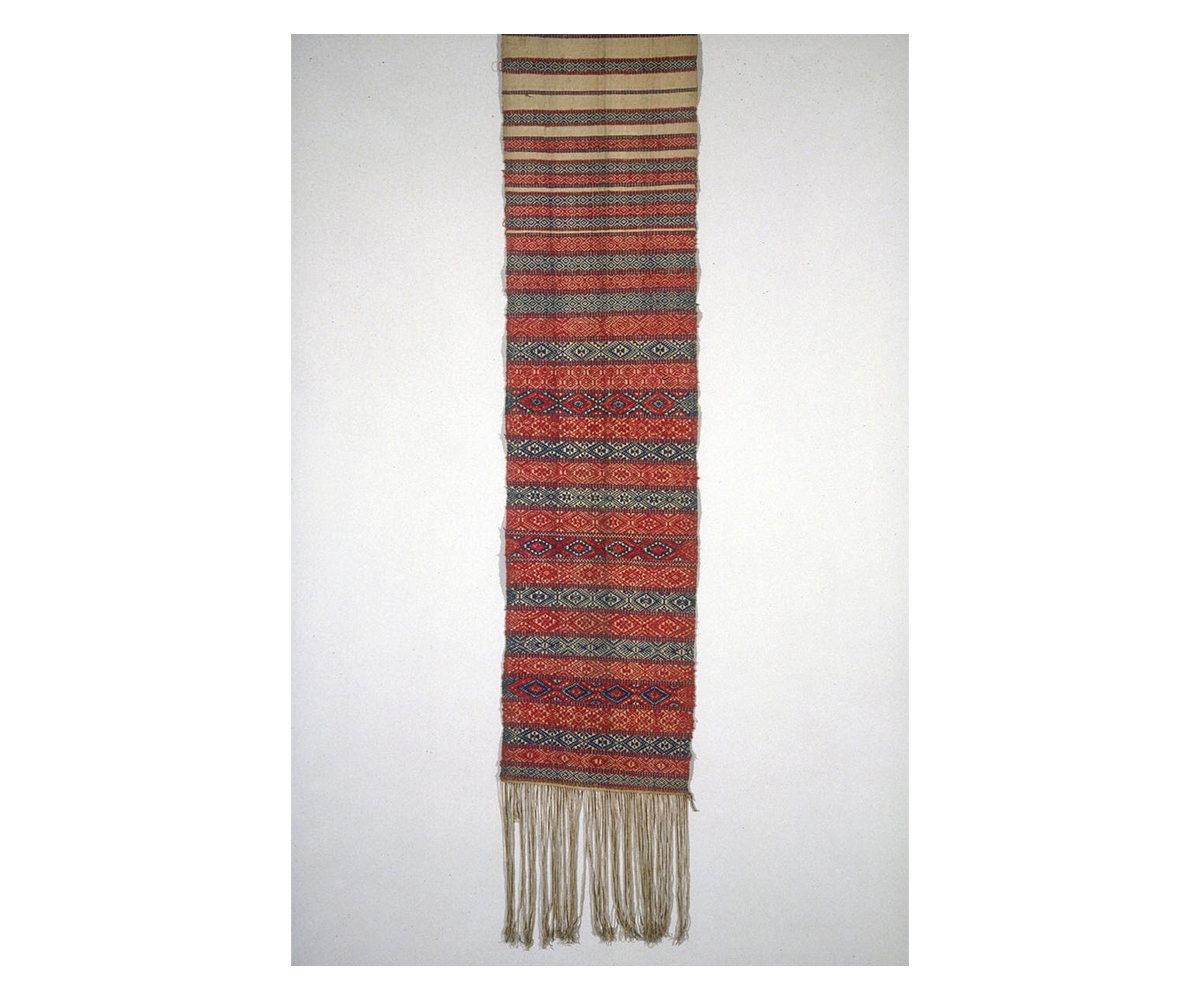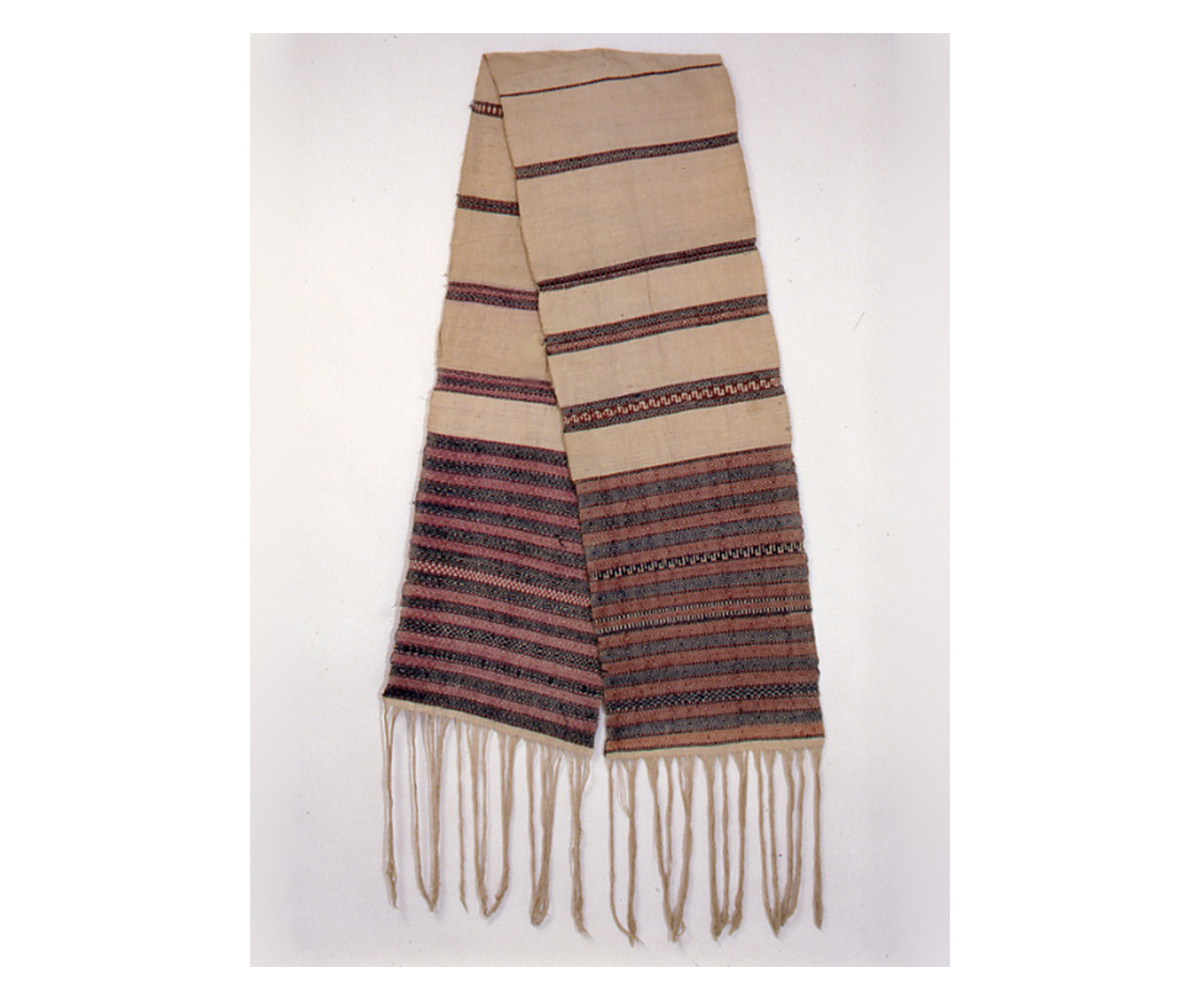ARTICLE
Kera
A colourful, hand-woven cloth belt with twisted fringes on either end, the kera is part of traditional Bhutanese attire. It is wrapped around the waist to cinch loose robes such as the kira and the gho, the national dresses for women and men respectively. Traditionally made of wool, cotton or silk, keras for men and women differ in their patterning as well as their significance. While women’s keras hold ornamental value, men’s keras are considered sacred and talismanic.
The kera was originally woven on a backstrap loom, and later the card loom from the mid-twentieth century. It is woven as a two-faced fabric, with the patterns visible on both sides. The warp threads at the ends are twisted into a fringe, which was left much longer in older keras than in newer ones. Typically between 180 and 240 centimetres long, the kera is wrapped several times around the waist with the fringe tucked in on the outside, serving to secure it. Older keras were sometimes woven two at a time, as a single long piece of cloth with intricate patterning at each end and sparse decoration towards the centre. Once woven, it would be split down the middle weft to produce two keras, each with a fringe on only one end. Contemporary keras have a fringe at both ends, allowing them to be wrapped from either end.
The women’s kera is woven with intricate geometric patterns, in a variety of bright colours. When worn, it is easily discernible below the short toego (jacket), unlike the men’s kera, which is usually concealed by the overhanging fabric of the gho. Traditionally, the belt was broad, with a width of around 30 to 45 centimetres, which emphasised the wearer’s waist and stomach; women were also known to sew two keras together to make them broader. Depending on its breadth, it could be folded on itself lengthwise a number of times before being wrapped. The bulk this created was also appreciated as part of a culture in which women often wore one kira over another as a display of the family’s wealth and prestige. According to some women, the broad kera was also especially useful in providing the spine with support when carrying heavy objects.
In the 1960s, weavers in Thimphu introduced a narrower version of the kera, which became popular after upper class women wore it during the coronation of former King Jigme Singye Wangchuck in 1974. The modern kera is between 5 and 8 centimetres wide, and is worn more tightly than older keras, reflecting changing body perceptions and cultural associations, and a preference for slimmer silhouettes. Although the broad kera is no longer in fashion, it is still woven by older women in parts of rural Bhutan.
The patterns of the women’s kera, woven using the supplementary weft technique, are complex and diverse. The earliest and most commonly recognised pattern on the women’s kera is thangshing, which comprises vertical bands of geometric motifs across the belt in red, blue or black on an unbleached white ground. Every fourth band in the pattern is dual-coloured, and features diamond motifs — this is known as thok. Thangshing can also include komtsham, which is a band of floral motifs. Fine strips known as tsimpiring run between each patterned band. Many of the motifs on the belt are adapted from the ones found on the ornate kushuthara fabric, and feature local techniques of embellishment such as thrima and sapma. Older keras made use of coloured thread on yellow and orange ground, which was referred to as lungsem, while contemporary keras come in multiple colours.
The men’s kera is simpler, with narrow stripes running lengthwise in various colours. It is wrapped around the waist over the gho, whose folds often hang over the kera. Although more functional than ornamental, the men’s kera is considered to be a powerful protective talisman, and meticulous care is taken to maintain one. The belt is treated as sacred and is not permitted to touch the ground. When removed, it must be carefully folded to ensure it does not tangle — if a knot is found, the kera is to be worn with the knot for three days — now revised to a minimum of one day — to preserve its power. The kera is also believed to protect the wearer from insomnia, nightmares and sleepwalking.
At the time of writing, the kera remains significant as an essential component of Bhutanese dress, and continues to be worn in its modern and traditional iterations across the country. Contemporary versions of the belt are also made of synthetic yarn such as acrylic, with metallic thread used for decorative patterns.
Bibliography
Altmann, Karin. Fabric of Life: Textile Arts in Bhutan – Culture, Tradition and Transformation. Berlin: De Gruyter, 2016.
Barker, David K. Designs of Bhutan. Bangkok: White Lotus, 1985.
Bean, Susan S., Diana K. Myers, and Rinzin O. Dorji. “Modeling a Future for Handmade Textiles Bhutan in the Twenty-First Century.” Textile Museum Journal 46 (2019): 52–73.
Myers, Diana K. “Costume and Ceremonial Textiles of Bhutan.” Textile Museum Journal 26 (1988): 25–54.
Myers, Diana K., Michael Aris, and Françoise Pommaret. From the Land of the Thunder Dragon: Textile Arts of Bhutan. Edited by Diana K. Myers and Susan S. Bean. London: Serindia Publications; Salem, MA: Peabody Essex Museum, 1994.
Yudon, Sonam. “Overview of Traditional Weaving (Thagzo) in Bhutan.” In Traditional Knowledge and Traditional Cultural Expressions of South Asia, edited by Sanjay Garg, 232–47. Colombo: SAARC Cultural Centre, 2015.




